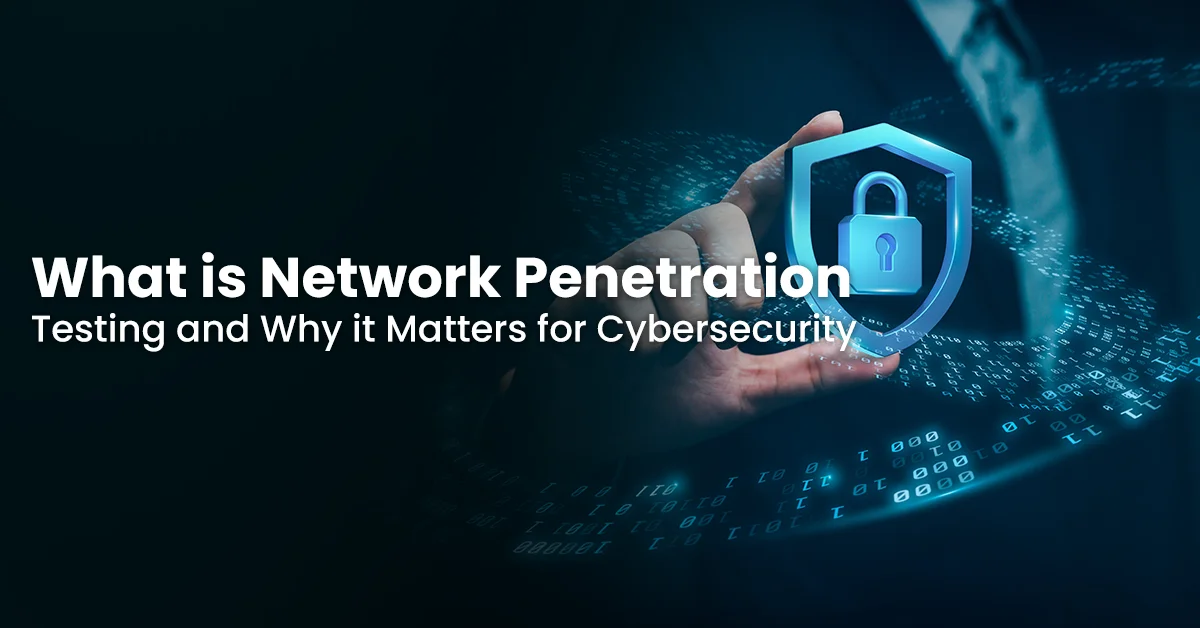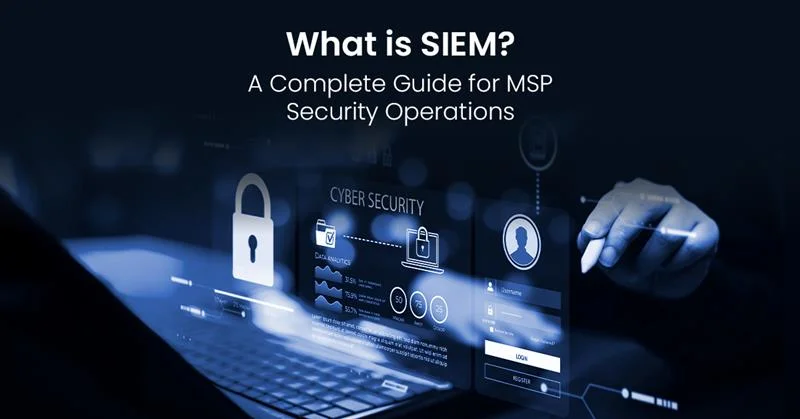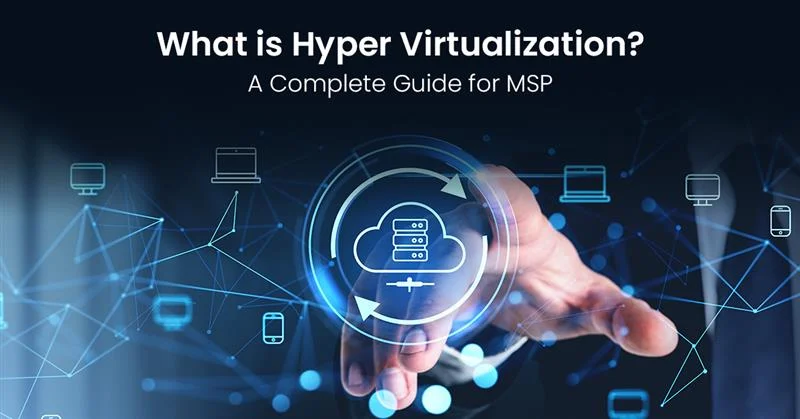Your network faces thousands of potential threats every single day. Network penetration testing, combined with SOC services for MSPs, forms the first line of proactive defense; identifying vulnerabilities before attackers exploit them. It’s controlled hacking performed by security experts who simulate real-world attacks to reveal exactly where your defenses fall short.
According to the IBM Cost of a Data Breach Report 2024, the global average cost of a data breach reached $4.88 million, a 10% increase from the previous year. These costs include recovery, lost business, legal fees, and long-term damage to reputation. The organizations hit hardest? Those that neglected proactive testing and continuous SOC monitoring.
In this blog, we’ll break down what network penetration testing really is, why it matters, and how integrating it with SOC services can help MSPs protect their clients from becoming another cybersecurity statistic.
What is Network Penetration Testing?
Network penetration testing is a simulated cyberattack on your systems performed by security professionals. Unlike automated vulnerability scans that simply flag potential issues, penetration testers attempt to exploit weaknesses using the same tools and tactics real hackers use.
The difference? These testers document their findings instead of stealing your data.
A proper network penetration test reveals how far an attacker could penetrate your defenses, what sensitive data they could access, and what damage they could inflict. Then you fix those gaps before criminals discover them.
The Real Cost of Ignoring Penetration Testing
Here’s what makes this critical: breaches are expensive and getting worse. The same IBM report found that organizations with extensive security AI and automation saved nearly $1.88 million compared to those without these protections.
But technology alone isn’t enough. You need regular testing to verify your defenses actually work under attack conditions. Organizations that conduct regular network penetration testing identify and fix vulnerabilities in days instead of months.
Key Components Every Network Penetration Test Should Cover
A comprehensive network penetration test examines multiple layers of your security:
- Network infrastructure assessment testing routers, switches, firewalls, and network segmentation
- Security controls evaluation verifying that intrusion detection systems and monitoring tools function properly
- Access control testing checking if privilege escalation is possible
- Risk identification and scoring prioritizing fixes based on actual business impact
Each component reveals different types of vulnerabilities that automated scans miss entirely.
Types of Penetration Testing Every Organization Needs
Different attack vectors require different testing approaches. Here’s what you need to understand about the main types.
Internal Network Penetration Testing: Testing From Within
Most devastating breaches happen from the inside. Sometimes it’s a malicious insider, but more often it’s a compromised employee credential that gives attackers internal access.
Internal network penetration testing simulates what happens when someone already has network access. Testers examine how far they can move laterally, which systems they can compromise, and what data they can steal.
Common tools for internal network penetration testing include:
- Metasploit for exploitation frameworks
- BloodHound for mapping Active Directory attack paths
- Responder for capturing network credentials
- Mimikatz for extracting passwords from memory
According to IBM’s 2024 findings, organizations that identify breaches faster see significantly lower costs. Internal testing helps you spot compromised credentials and lateral movement attempts quickly.
External Network Penetration Testing: Your Perimeter Defense
While insider threats pose real risks, most attacks start from outside your network. External network penetration testing focuses on what remote attackers see when they target your organization.
This testing examines:
- Public websites and web applications
- VPN endpoints and remote access portals
- Email servers and gateways
- Any internet-facing service or system
Testers use reconnaissance tools like Nmap for network scanning, Burp Suite for web application testing, and OWASP ZAP to find injection vulnerabilities and configuration errors.
The goal is simple: ensure your perimeter security can withstand real attacks.
Why Both Types Matter
Organizations often make a critical mistake: they test only external or internal attack surfaces, not both.
Attackers don’t limit themselves. They probe every possible entry point looking for the easiest way in. Testing only externally leaves you blind to insider threats. Testing only internally assumes your perimeter is secure, which is often a dangerous assumption.
Both types of network penetration testing are necessary for complete security coverage.
How to Conduct a Comprehensive Network Penetration Test
Professional network penetration testing follows a structured methodology, not random attacks hoping to find something. Here’s the proven approach.
Phase 1: Planning and Reconnaissance
Every test starts with planning. Testers define the scope, determine what systems are in bounds, and gather intelligence about your organization.
The reconnaissance phase includes:
- DNS enumeration to discover subdomains
- WHOIS lookups for organizational data
- Open source intelligence gathering
- Identifying network ranges and IP addresses
This phase is passive. No actual attacks occur yet. Testers are mapping your attack surface.
Phase 2: Scanning and Vulnerability Identification
The active scanning phase identifies live hosts, open ports, running services, and potential vulnerabilities.
Tools like Nessus, OpenVAS, and Qualys automatically identify known vulnerabilities with CVE identifiers. Professional testers go beyond automation, manually validating findings and searching for business logic flaws that scanners can’t detect.
Phase 3: Exploitation and Access
This phase separates network penetration testing from basic vulnerability scanning. Testers actually exploit the vulnerabilities they discovered.
Can they gain initial access? Escalate privileges? Move laterally to other systems? Every successful exploitation gets documented with detailed proof including screenshots, command outputs, and reproduction steps.
Real-world example: cloud storage misconfigurations have become a major vulnerability. Proper network penetration testing uncovers these exposures before attackers exploit them.
Phase 4: Post-Exploitation and Reporting
The final phase assesses business impact, documents all discoveries, and provides a clear remediation roadmap.
Quality penetration test reports include:
- Executive summary for leadership
- Technical findings for IT teams
- Risk ratings with CVSS scores
- Prioritized remediation steps
The report is your blueprint for fixing vulnerabilities, not just a list of problems.
Why Network Penetration Testing is Important for Modern Cybersecurity
If you’re questioning whether network penetration testing is worth the investment, consider what’s actually at stake.
Compliance Requirements Demand It
Organizations handling payment cards need PCI DSS compliance, which explicitly requires regular penetration testing. Healthcare organizations under HIPAA have the same requirement. SOC 2 certification also mandates network penetration testing.
Skipping testing risks audit failures, lost certifications, and regulatory penalties that far exceed testing costs.
Your Reputation Depends On It
Financial losses hurt, but reputational damage can destroy organizations. Customers lose trust when their data appears on the dark web. Partners reconsider relationships. Investors get nervous.
Organizations that proactively conduct network penetration testing demonstrate they take security seriously. Those that don’t become cautionary tales in news headlines.
Threats Evolve Constantly
Cybersecurity challenges grow daily because threats evolve faster than most organizations adapt. What worked last year might be useless today.
Ransomware attacks increasingly target small and medium businesses that mistakenly believe they’re “too small” to be targeted. Advanced Persistent Threats (APTs) use sophisticated techniques that automated defenses miss.
Regular network penetration testing helps you stay ahead of evolving attack tactics.
Common Tools and Methodologies for Network Penetration Testing
Professional penetration testers follow established methodologies and use industry-standard tools for consistent, comprehensive testing.
Essential Tools Testers Use
- Metasploit Framework for exploitation and post-exploitation
- Nmap for network discovery and port scanning
- Wireshark for network traffic analysis
- Burp Suite for web application security testing
- Kali Linux as the primary testing operating system
Industry-Standard Frameworks
Professional network penetration testing follows recognized methodologies:
- PTES (Penetration Testing Execution Standard) provides a structured approach
- OWASP Testing Guide focuses on web application components
- NIST SP 800-115 offers government-backed technical security testing guidance
- MITRE ATT&CK Framework maps real-world attacker tactics and techniques
These frameworks ensure testing is thorough and doesn’t miss critical security areas.
Conclusion: Secure Your Network with Expert SOC Services
Network penetration testing isn’t optional. It’s the difference between proactive defense and reactive damage control. With average breach costs hitting $4.88 million, the question isn’t if you’ll be targeted but when.
Strengthen Your Security with IT By Design’s SOC Services
IT By Design’s Security Operations Center delivers 24/7 protection through continuous monitoring, expert threat detection, and immediate incident response. Our services include vulnerability management, SIEM implementation, compliance support for PCI DSS, HIPAA, and SOC 2, plus access to certified security professionals.
Don’t wait for a breach to make headlines. The cost of proactive security is minimal compared to recovery from a successful attack.
Schedule a call with us today to know and get enterprise-grade protection with continuous monitoring, expert-led network penetration testing, and rapid incident response. Focus on your business while we handle your security threats.
FAQs (Frequently Asked Questions)
Q: What is the difference between vulnerability scanning and network penetration testing?
Vulnerability scanning automatically identifies potential weaknesses, while network penetration testing involves manual exploitation to determine real-world impact and actual risk.
Q: How often should organizations perform network penetration testing?
High-risk environments need quarterly testing, most organizations should test annually for compliance, and always test after major infrastructure changes or security incidents.
Q: What are the most common vulnerabilities found during network penetration tests?
Misconfigured firewalls, weak authentication, unpatched systems, inadequate network segmentation, default credentials, and overly permissive access controls.
Q: Can penetration testing disrupt business operations?
Professional testers coordinate testing windows and work within defined scopes to minimize disruption and avoid impacting critical business processes.
Q: Is network penetration testing required for compliance?
Yes, regulatory frameworks like PCI DSS, HIPAA, and SOC 2 mandate regular penetration testing to maintain certification and demonstrate security diligence.








